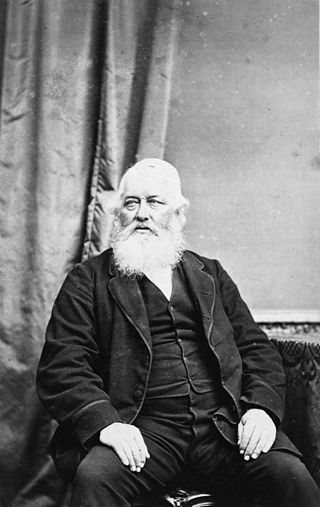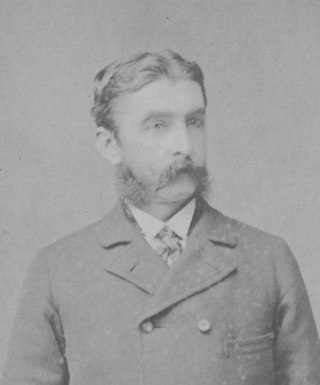Related Research Articles

The 1879 New Zealand general election was held between 28 August and 15 September 1879 to elect a total of 88 MPs to the 7th session of the New Zealand Parliament. The Māori vote was held on 8 September. A total of 82,271 (66.5%) European voters turned out to vote, plus 14,553 Māori voters. Following the election, John Hall formed a new government.
Ashburton was a New Zealand electorate, first created in 1881 and centred on the South Island town of Ashburton.

Sir John Cracroft Wilson, also known as Nabob Wilson, was a British-educated civil servant in India, farmer and politician in New Zealand.

Nelson is a New Zealand parliamentary electorate, returning one Member of Parliament to the House of Representatives of New Zealand. From 1853 to 1860, the electorate was called Town of Nelson. From 1860 to 1881, it was City of Nelson. The electorate is the only one that has continuously existed since the 1st Parliament in 1853.

William Reeves was a New Zealand 19th century journalist and politician. He was the father of the author and politician the Hon. William Pember Reeves.
Coleridge is a former parliamentary electorate in the Canterbury region of New Zealand. The electorate existed from the 1866 election to 1887.
Stanmore was a parliamentary electorate in Christchurch, New Zealand, from 1881 to 1887. The electorate was represented by two Members of Parliament.
Heathcote was a 19th-century parliamentary electorate in Christchurch, New Zealand.
Waimea was a parliamentary electorate in the Nelson Province of New Zealand, from 1853 to 1887. Initially represented by two members, it was a single-member electorate from 1861.

Henry Sawtell was Mayor of Christchurch 1871–1872.

Walter Hippolyte Pilliet JP was a 19th-century Member of Parliament in Christchurch, New Zealand. He worked initially as a surveyor and was then resident magistrate in several places. He was a newspaper editor and was represented in Parliament for one term.
George Hart was a 19th-century Member of Parliament in the Canterbury region of New Zealand.
John Karslake Karslake was a 19th-century Member of Parliament in the Canterbury region of New Zealand.
Richard Seaward Cantrell was a 19th-century Member of Parliament from Dunedin, New Zealand.
The 5th New Zealand Parliament was a term of the New Zealand Parliament. Elections for this term were held in 68 European electorates between 14 January and 23 February 1871. Elections in the four Māori electorates were held on 1 and 15 January 1871. A total of 78 MPs were elected. Parliament was prorogued in December 1875. During the term of this Parliament, six Ministries were in power.
The 1872 Heathcote by-election was a by-election for the electorate of Heathcote during the 5th New Zealand Parliament, and resulted when the previous incumbent John Hall resigned.

The Christchurch mayoral election held on 27 November 1878 was contested by the incumbent mayor, Henry Thomson, and senior Christchurch City Councillor Charles Thomas Ick. The election was won by Ick with a large margin.
The 1872 Caversham by-election was a by-election held on 28 August 1872 in the Caversham electorate in the Otago region of New Zealand during the 5th New Zealand Parliament.
The 1872 Waikato by-election was a by-election held on 1 March 1872 in the Waikato electorate in the Waikato region of New Zealand during the 5th New Zealand Parliament.
References
- ↑ Wilson, James Oakley (1985) [First ed. published 1913]. New Zealand Parliamentary Record, 1840–1984 (4th ed.). Wellington: V.R. Ward, Govt. Printer. p. 209. OCLC 154283103.
- 1 2 "Coleridge Election". The Press . Vol. XX, no. 2879. 24 July 1872. p. 2.
- ↑ "The Coleridge Election". Auckland Star . Vol. III, no. 785. 24 July 1872. p. 2.
- ↑ "Coleridge District". The Star . No. 1370. 18 July 1872. p. 2.